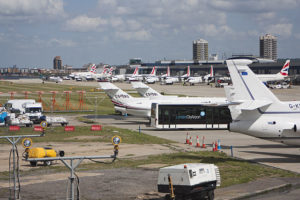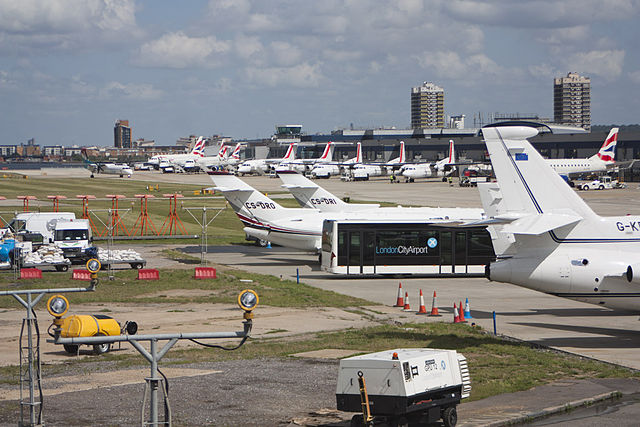 Global passenger and cargo growth remained resilient and robust in the face of threats from trade and political tension around the world, according to Airports Council International (ACI) World’s 2018 edition of its annual World Airport Traffic Report (WATR).
Global passenger and cargo growth remained resilient and robust in the face of threats from trade and political tension around the world, according to Airports Council International (ACI) World’s 2018 edition of its annual World Airport Traffic Report (WATR).
All regions experienced growth with a robust year-on-year global passenger increase of 7.5% in 2017 over 2016, one of the strongest growth rates on record. Air cargo also experienced a revival across many of the world’s airports in 2017, posting a record-breaking jump of 7.7% from the previous year.
As well, aircraft movements increased by 3% in 2017, the highest annual percentage growth increase since 2004.
All told, the world’s airports accommodated 8,277,676,508 passengers, 118,612,750 metric tonnes of cargo, and 95,772,011 aircraft movements.
Aviation’s center of gravity continued to shift eastward in 2017, said WATR. Most of the world’s fastest growing large airports are located in emerging markets; 16 of the fastest growing top 30 airports with over 15 million passengers are located in just two countries, China and India.
“Global passenger traffic has reached record levels as airports continued to make a crucial contribution to furthering economic development and global connectivity,” said Angela Gittens, director general of ACI World.
A fundamental concern for the industry is “the threat of heavy-handed regulation that hinders the economic sustainability of airport investment and operation and changes in international trade policy,” she added.
“Protectionist policies that retreat from further economic integration and air transport liberalization could have adverse effects on the industry,” said Gittens.
“Global air service growth has remained resilient but the continuing impact of protectionism and trade wars on international air transport services will likely have a major impact on airports in the future. The benefits of increased air travel are clear and further liberalization should be welcomed to maintain growth and improve connectivity to the benefit of the global trade and local communities.”
International traffic and industrial production are the key drivers for growth, said the report. Airports located in countries that are major exporters of manufactured goods handled almost 75% of global air cargo volume.
Even with the uncertainty regarding the threat of trade wars and the growth of protectionist sentiments across the world, industrial production continued to make gains as a result of the cyclical recovery in the global economy. Inventory build-ups, augmented export orders, and a strengthening of consumer demand reflected in increased online purchases were important drivers in the near term. All of this translated into growth in air cargo volumes.
Comparatively speaking, passenger traffic in advanced economies grew 5.2%, while passenger traffic in emerging economies grew 10.3% in 2017.
“It is expected that rising incomes in emerging markets will help propel global traffic to new heights in the coming decades as new aviation hubs begin to overtake the more mature markets of Western Europe and North America,” observed WATR.
Sizeable population bases and rapid rises in incomes in emerging markets are the main economic engines driving air transportation demand. The growth potential can be illustrated by the fact that countries located in emerging markets account for over 85% of the world’s population but less than half of global gross domestic product.
Meanwhile, the world’s busiest airports for passengers are located in Asia-Pacific, said the report. With 13 airports out of the top 30 busiest passenger hubs, the region dominates the ranking for 2017. Traffic at the world’s 30 busiest air passenger hubs grew 5.4% last year, serving almost 2 billion passengers, 24% of all global passenger traffic.
Atlanta-Hartsfield-Jackson maintained its position as the world’s busiest airport by handling just under 104 million passengers in 2017; Beijing held second spot with over 95 million passengers; Dubai International remained in third position with more than 88 million passengers and maintained its position as the world’s busiest hub for international passenger traffic.
On the other hand, the busiest airports for air cargo were led by Hong Kong, which handled five million metric tonnes of cargo in 2017, a 9.4% increase over 2016. Memphis remained in second place with 4.3 million metric tonnes and Shanghai stayed in third with 3.8 million metric tonnes.
Total air cargo volume at the 30 busiest cargo airports grew 7.3% in 2017. These airports handled a combined 62 million metric tonnes of cargo, representing 52% of all global air cargo volume.
The WATR drew data from more than 2,500 airports in more than 175 countries.
Photo: Senseiich





